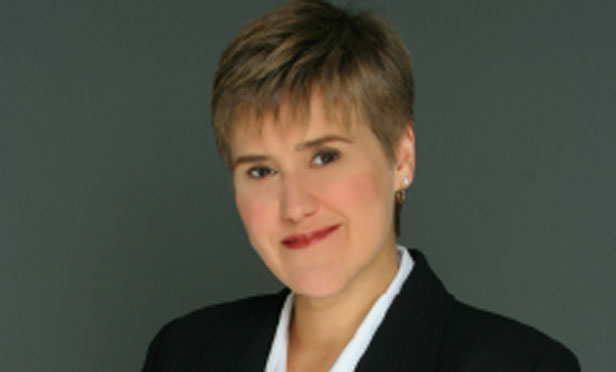 Kate Langan, chair of CoreNet Global and group general manager property at ANZ Banking Group in Melbourne, Australia .
Kate Langan, chair of CoreNet Global and group general manager property at ANZ Banking Group in Melbourne, Australia .
Part 1 of 2
PHILADELPHIA—This week, CoreNet Global hosts its Americas Global Summit in Philadelphia. The event's theme is “The Bigger Picture: Geopolitics, Economics and the Environment.” One topic that will be discussed in detail is the future of corporate real estate. How will business change the way it manages its real estate and what, in turn, will be affected by this change? CoreNet Global recently released an in-depth analysis on the future of Corporate Real Estate and GlobeSt.com spoke with Kate Langan, chair of CoreNet Global and group general manager property at ANZ Banking Group in Melbourne, Australia, for her insights on the main findings of the report.
GlobeSt.com: CoreNet Global recently issued a wide-ranging report on the Future of Corporate Real Estate. What do you think are the main takeaways for the commercial real estate industry?
Kate Langan: An overall takeaway is that corporate real estate (CRE) is increasingly becoming a more strategic corporate function that touches a wide range of key areas in a business. The CRE function needs to physically embody the culture of the business it supports and, as such, has a direct impact on the way that people work and ultimately business productivity and success. Technology is already a significant driver in how we live our lives and run our businesses and CRE professionals need to be aware of how today's pervasive technology impacts the CRE function. In addition, the CRE Manager needs to be cognisant of other key agents of change, namely—the global economy, cyber security, environmental considerations, energy and sustainability, risk mitigation, attraction and retention of staff, and the future of our cities. All of these elements are both independent and interconnected catalysts that impact the CRE function.
GlobeSt.com: What do you see as the future relationship between corporate real estate and energy usage globally, and what will the impact be on energy policy?
Langan: Sustainability and energy efficiency took root during the 1970s energy crisis as prices escalated and companies looked for ways to reduce costs. Many corporations, and governments around the world for that matter, are at very different stages of putting strategies, initiatives and policies in place to advance environmental sustainability.
Corporations are gradually increasing their focus on reducing their carbon emissions. Certainly, it is important to note the progress that has been made in terms of increasing installation and use of non-carbon fuel sources. There was, for example, a record global investment in renewable energy in 2014 with an estimated $391 billion invested in low-carbon technology and climate resilience, according to new analysis by the Climate Policy Initiative2. This represents an increase of 18% over the 2013 level of $331 billion invested. China was the biggest investor in renewables at $83 billion, followed by the US at $38 billion and Japan at $36 billion. Globally, nearly half of all new power installed has been from renewable sources.
The cost of energy whilst still a key issue needs today to be balanced by the CRE professional with regulatory obligations and each company's corporate social responsibility policy. The workforce is becoming increasingly concerned and interested in the environmental policies of their employers. As the demand for knowledge workers increases, corporations are looking more critically at their energy usage and environmental practices as a way to attract and retain talent.
GlobeSt.com: Are corporations taking wellness seriously, and is this movement going to continue?
Langan: Yes. Healthy and engaged workers are a company's greatest asset and companies are paying close attention to the role the workplace can play in the health of its employees.
Cristina Banks, Director of the Interdisciplinary Center for Healthy Workplaces at the University of California, Berkeley, sees a healthy workplace, as a critical part for both employee engagement and talent retention. She notes that wellbeing leads to improved productivity. Cristina points-out that a sustainable workplace is not just good for the health of employees, but is also a business and policy imperative. “We need to utilize talent and we can't afford to throw it away,” she says, but “we're eroding the talent we have because of the way we treat them.”
While companies may be at different stages of understanding and implementation, “We're at an inflection point where it's understood that we need to get healthier,” Banks has said.
GlobeSt.com: Similarly, will corporations continue to be serious about social responsibility and giving back?
Langan: Businesses have not always been known for their commitment to being good corporate citizens, but for the better part of the past century they have become increasingly concerned with the world outside their walls. Corporate social responsibility (CSR) has become a tool for expressing the values of companies and their shareholders, a way of linking organizations to popular or important issues, and a point of pride for employees.
While it can carry costs, CSR is best seen as the glue that holds an organization together and gives it a sense of purpose. Of course, CSR is also a tool for attracting and retaining staff who want their work to be aligned with their values.
Unilever's Alexandra Tarmo believes that real estate is a tool for CSR. This shows itself primarily in building efficiencies and land use policy, but Tarmo also notes that her company instituted a “Responsible Sourcing Policy” to guide the conduct of the business with integrity and respect for human rights. The policy, launched in 2014, sets requirements on human and labor rights not only in Unilever itself but also in the companies that Unilever conducts business with.
Check back with GlobeSt.com this week for part two of this Q&A, where we go in depth on technology and how things are changing.
© 2025 ALM Global, LLC, All Rights Reserved. Request academic re-use from www.copyright.com. All other uses, submit a request to [email protected]. For more information visit Asset & Logo Licensing.








